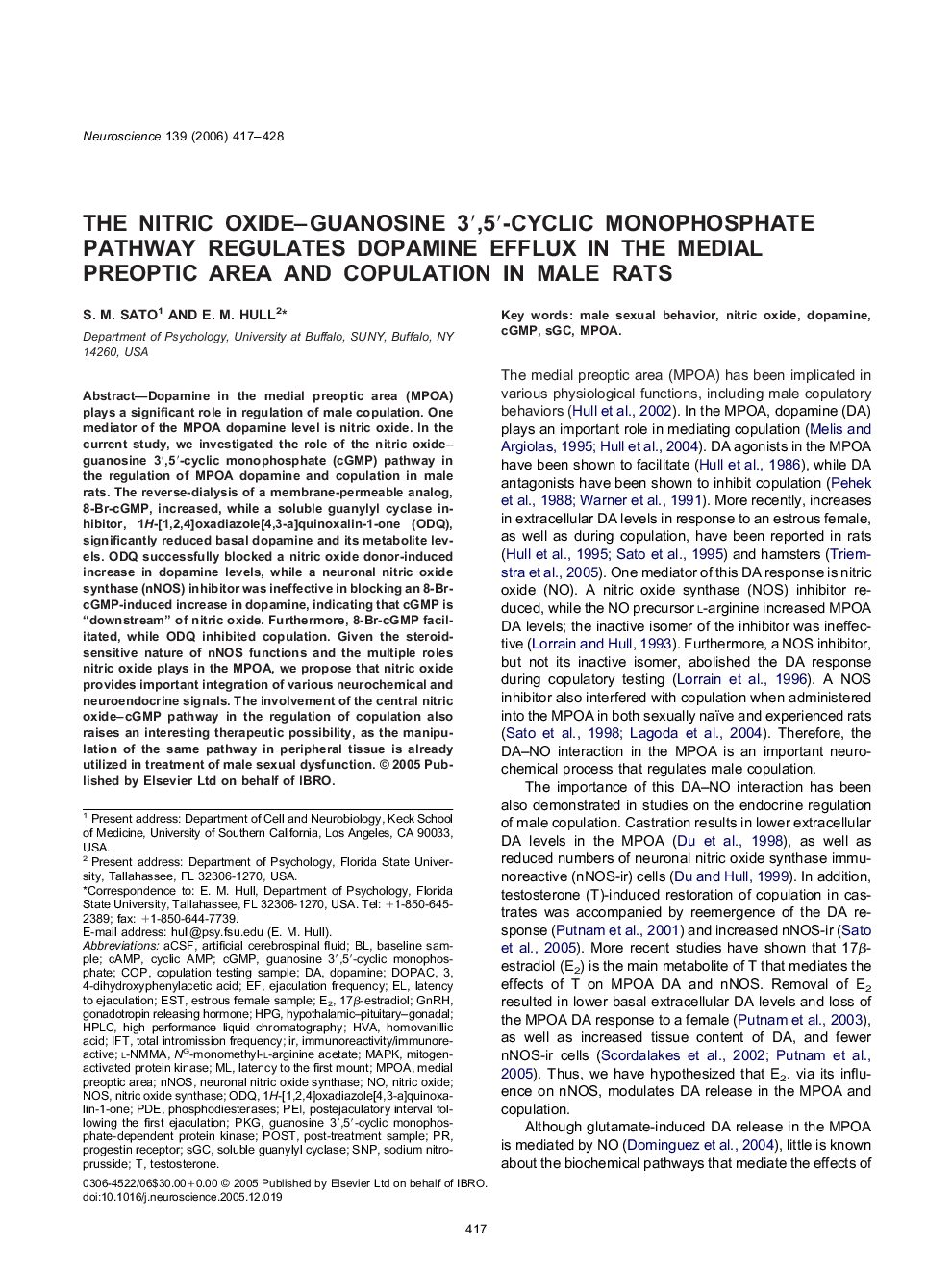| Article ID | Journal | Published Year | Pages | File Type |
|---|---|---|---|---|
| 4341877 | Neuroscience | 2006 | 12 Pages |
Dopamine in the medial preoptic area (MPOA) plays a significant role in regulation of male copulation. One mediator of the MPOA dopamine level is nitric oxide. In the current study, we investigated the role of the nitric oxide–guanosine 3′,5′-cyclic monophosphate (cGMP) pathway in the regulation of MPOA dopamine and copulation in male rats. The reverse-dialysis of a membrane-permeable analog, 8-Br-cGMP, increased, while a soluble guanylyl cyclase inhibitor, 1H-[1,2,4]oxadiazole[4,3-a]quinoxalin-1-one (ODQ), significantly reduced basal dopamine and its metabolite levels. ODQ successfully blocked a nitric oxide donor-induced increase in dopamine levels, while a neuronal nitric oxide synthase (nNOS) inhibitor was ineffective in blocking an 8-Br-cGMP-induced increase in dopamine, indicating that cGMP is “downstream” of nitric oxide. Furthermore, 8-Br-cGMP facilitated, while ODQ inhibited copulation. Given the steroid-sensitive nature of nNOS functions and the multiple roles nitric oxide plays in the MPOA, we propose that nitric oxide provides important integration of various neurochemical and neuroendocrine signals. The involvement of the central nitric oxide–cGMP pathway in the regulation of copulation also raises an interesting therapeutic possibility, as the manipulation of the same pathway in peripheral tissue is already utilized in treatment of male sexual dysfunction.
